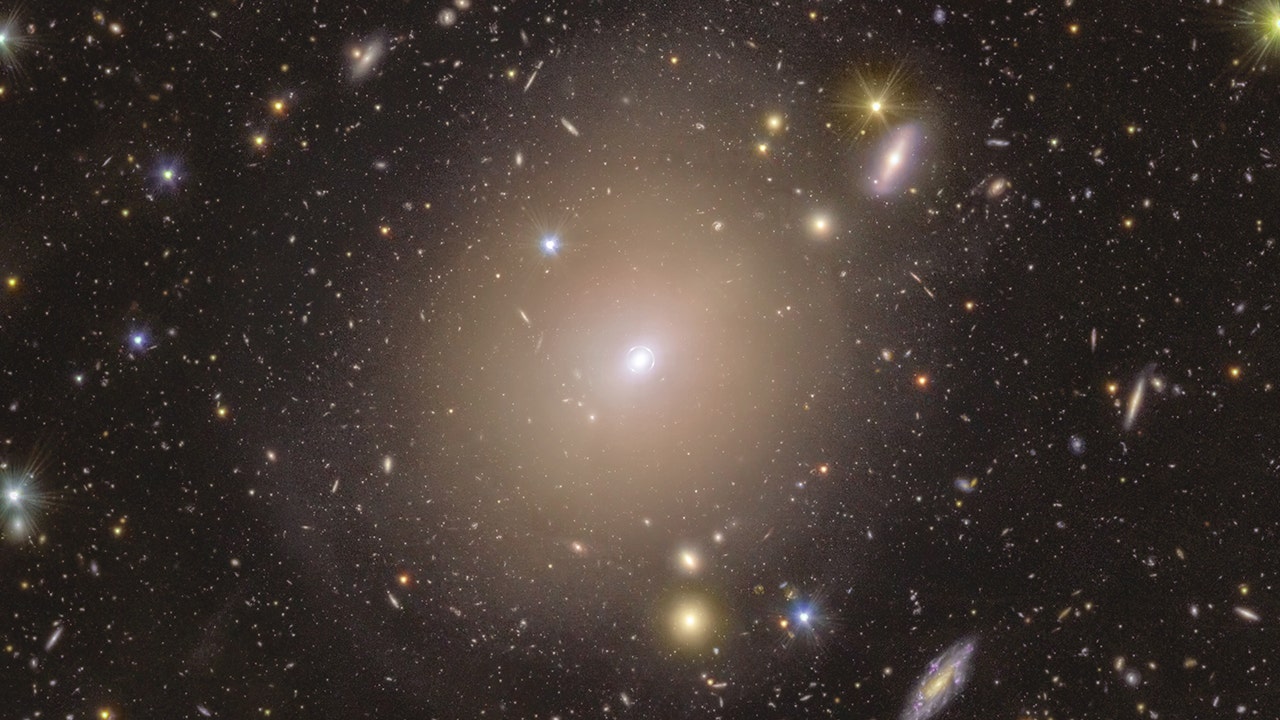ESA’s space telescope Euclid discovers ‘astonishing’ Einstein ring

The European Space Agency (ESA) announced on Monday that its Euclid space telescope has made a groundbreaking discovery, capturing a rare bright halo of light around a nearby galaxy. This phenomenon, known as an Einstein ring, was observed encircling a galaxy located nearly 590 million light-years away, which is considered close in cosmic terms. To put this distance into perspective, a single light-year is equivalent to 5.8 trillion miles.
The galaxy where the Einstein ring was detected has been known to astronomers for over a century. However, the appearance of the bright glowing ring surrounding it took scientists by surprise when it was revealed by the Euclid space telescope. Launched from Cape Canaveral, Florida on July 1, 2023, Euclid embarked on a six-year mission to explore the dark universe.
During the early testing phase in September 2023, Euclid sent back images to Earth to ensure that all systems were functioning correctly. These images, deliberately out of focus, caught the attention of Euclid Archive Scientist Bruno Altieri, who identified the special phenomenon in one of the images. Altieri expressed his excitement, stating, “Even from that first observation, I could see it, but after Euclid made more observations of the area, we could see a perfect Einstein ring. For me, with a lifelong interest in gravitational lensing, that was amazing.”
The ESA highlighted that an Einstein Ring is an extremely rare occurrence, even for seasoned astronomers. This phenomenon occurs when the light from a distant galaxy passes through another galaxy on its way to the telescope. The foreground galaxy acts as a magnifying lens due to gravity, causing the light rays to bend and creating a ring-like appearance when observed through a telescope.
The galaxy in question, named NGC 6506, is located approximately 590 million light-years away, and this marks the first time that the bright ring of light around its center has been detected. Scientists are particularly intrigued by this discovery, as it showcases the power and capabilities of the Euclid space telescope in unveiling new phenomena in familiar regions of space.
By leveraging Albert Einstein’s general theory of relativity, which predicts the bending of light around objects in space, scientists can use Einstein rings to reveal hidden aspects of the universe. The ESA emphasized that Euclid’s mission will shed light on the role of gravity, dark energy, and dark matter in the universe, with the potential to revolutionize the field of astrophysics.
As Euclid continues its mission to map a significant portion of the sky and observe billions of galaxies up to 10 billion light-years away, scientists anticipate uncovering around 100,000 more strong lenses. The discovery of the Einstein ring in such close proximity to Earth underscores the remarkable capabilities of Euclid and sets the stage for groundbreaking revelations in the field of astronomy.
In conclusion, the ESA’s Euclid space telescope has made a remarkable discovery with the detection of an Einstein ring around a nearby galaxy, showcasing the telescope’s potential to revolutionize our understanding of the universe. This groundbreaking finding serves as a testament to the power of scientific exploration and the endless mysteries waiting to be unraveled in the vast expanse of space.




